In this guide, I’ve reviewed every Honda Civic from 2001 to the latest model and categorized the best & worst years of each.
My guide will analyze the latest Honda Civic generations, determining the best and worst years to buy Honda Civics.

With evidence from authoritative sources such as NHTSA and Consumer Reports, as well as JDPower, I will discuss how different generations of Civic have evolved in terms of performance, reliability, and quality.
With this information, you’ll find out which Honda Civic year is best to buy, which Honda Civic year has AC problems, and what Civic year is most reliable.
It’s time to get started.
Honda Civic Generations
In 1972, Honda Civic became one of the world’s best-selling compact cars. An era of energy crises necessitated affordable and fuel-efficient transportation, which Honda Civic provided in its first generation.
In the table below, you will find a history of Honda Civic generations since 2001:
| Generation | Years |
| 7th generation (ES/EN) | 2001-2005 |
| 8th generation (FA1) | 2006-2011 |
| 9th generation (FB) | 2012-2015 |
| 10th generation (FC1/FC2/FC5) | 2016-2021 |
| 11th generation (FE) | 2022-Present |
When comparing different model years, recognizing the generational shifts can provide a clearer perspective, especially since specific upgrades or changes might be the deciding factor.
Honda Civic Best, Neutral, and Worst Years
A spectrum of factors are considered when evaluating the best, neutral, and worst Honda Civic years, including:
Our upcoming graph will show consolidated ratings from the platforms mentioned above.
I have categorized each model year of the Honda Civic as best, neutral, and worst in the table below.
| Generation | Best Years | Neutral Years | Worst Years |
| 7th generation (ES/EN) | 2004 2005 | N/A | 2001 2002 2003 |
| 8th generation (FA1) | 2009 2010 2011 | N/A | 2006 2007 2008 |
| 9th generation (FB) | 2013 2014 2015 | N/A | 2012 |
| 10th generation (FC1/FC2/FC5) | 2019 2020 2021 | 2017 2018 | 2016 |
| 11th generation (FE) | 2023 | N/A | 2022 |
Neutral Years are those model years that weren’t particularly acclaimed as the best, but didn’t receive significant negative feedback.
Our evaluations are adversely affected by some factors, particularly NHTSA recalls. The reliability score of a car drops when there are more complaints and recalls.
Taking a closer look at each Honda Civic year, we’ll see what the specifications are like.
Best & Worst Years for Honda Civic 7th Generation (2001-2005)
A significant design and engineering shift was evident in the 7th generation Honda Civic, released in 2000.
2001, 2002, and 2003 may require extra caution, so they are considered Honda Civic years to avoid. The Honda Civic’s best years are the later years of the generation – 2004 and 2005.
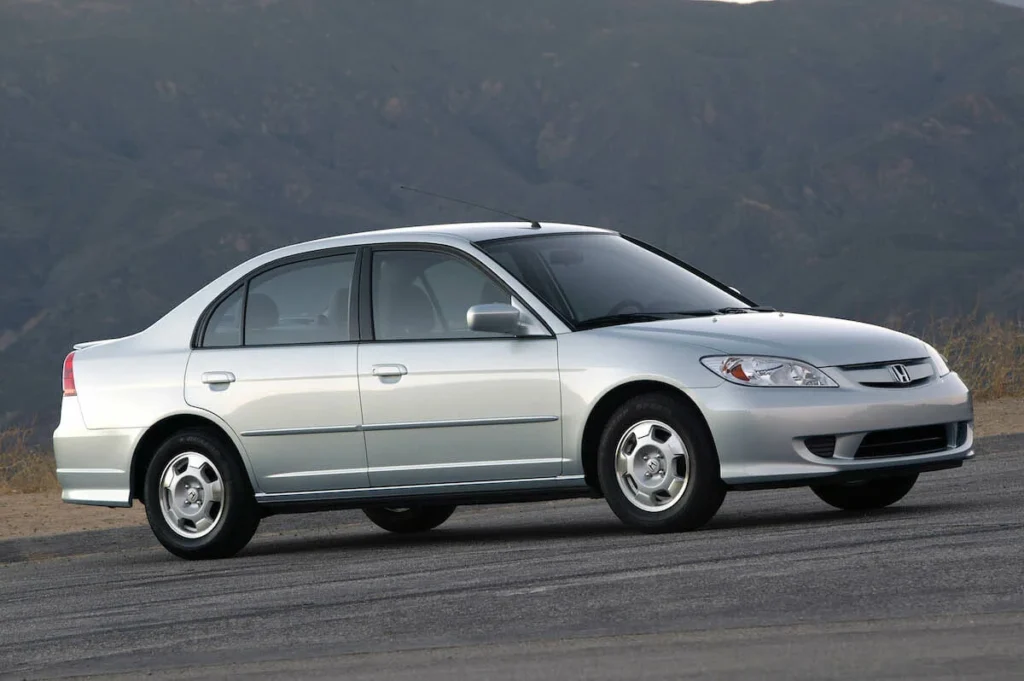
The Best Years: 2004, 2005
It’s undeniable that 2004 and 2005 were the best Honda Civic years this generation, due to their good fuel economy figures of 21 mpg for city driving and 40 mpg for highway driving.
Engine options included a range of 1.7L SOHC VTEC engines, which were the most popular. Four-speed automatics and five-speed manual transmissions were available for these cars, which provided balanced performance.
Choosing from the base-level DX to the sporty Si model, consumers could find a trim to suit their budgets and desires.
During these years, audio systems began to improve, power locks were introduced, and air conditioners became more refined.
Safety features include anti-lock brakes, dual front airbags, and side airbags on the EX.
In spite of their successes, these years weren’t without their challenges. There have been occasional electronic glitches reported by some owners, especially with the radio and power windows.
The Worst Years: 2001, 2002, 2003
Due to transmission problems and high repair costs, Honda Civic years 2001, 2002, and 2003 should be avoided.
In severe cases, transmissions failed completely due to slipping, delay when changing gears, and, in rare cases, total transmission failure.
Early on, recalls were also a concern. For example, the 2001 model was recalled due to exterior lighting and fuel pumps causing sudden engine stalls.
The CVT transmissions and sporadic electrical issues persisted in the 2003 and 2002 Civic models despite Honda’s attempts to fix these problems.
However, they also had their merits, including good fuel economy and compact, agile design.
Recalls and complaints about the Honda Civic have been reported to the NHTSA for 2001, 2002, 2003, 2004, and 2005.
Best & Worst Years for Honda Civic 8th Generation (2006-2011)
Introducing a two-tier dashboard and more aggressive body lines in 2006, the 8th generation Honda Civic featured a futuristic redesign.
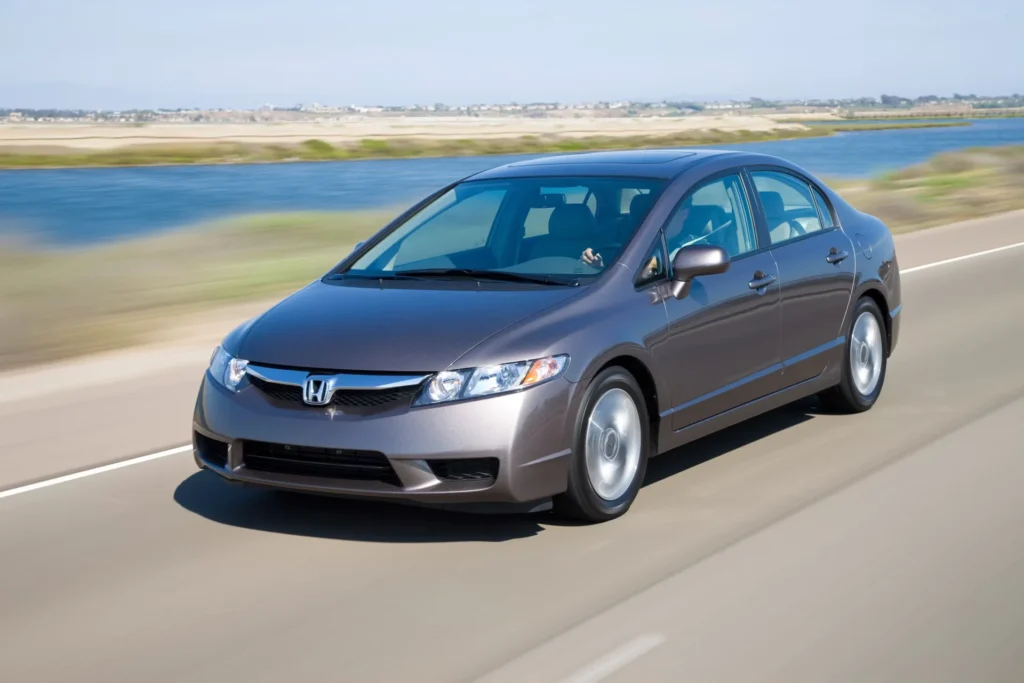
The eight-generation Honda Civic has had its worst years in 2006, 2007, and 2008, while its best years were 2009, 2010, and 2011.
The Best Years: 2009, 2010, 2011
The 2011 Honda Civic is primarily the best Civic of this generation because of its improved fuel economy. Honda Civic 8th-generation models from 2009 and 2010 are also reliable.
Fuel efficiency and impressive horsepower were offered by these models with their 1.8L SOHC i-VTEC engines.
The trim levels varied, from the entry-level DX to the well-equipped LX, and from the sporty Si to the well-equipped EX.
As part of these years, the Civic Hybrid with an Integrated Motor Assist system and the natural-gas-powered GX variant were introduced.
In the city, the average fuel economy increased to 19 mpg, and on the highway, to 45 mpg.
There was an increase in the availability of advanced navigation systems, USB audio interfaces, as well as stability control in mid-tier trims.
The Worst Years: 2006, 2007, 2008
You should avoid Honda Civics made in 2006, 2007, and 2008 due to engine cracks that cause coolant leaks and more severe problems.
Even though Honda didn’t openly recall the vehicles, they acknowledged the problem by settling a lawsuit, which resulted in many affected owners getting their engines replaced.
As a result of problematic rear control arms, owners reported excessive rear tire wear and suspension problems during these years.
It was also difficult to deal with recalls. There were problems with critical components like the engine and suspension, as well as exterior lighting.
NHTSA recalls and complaints for Honda Civics in 2006, 2007, and 2008.
Best & Worst Years for Honda Civic 9th Generation (2012-2015)
A new generation of Honda Civics were introduced in 2012, reshaping their aesthetics and improving their technology features.
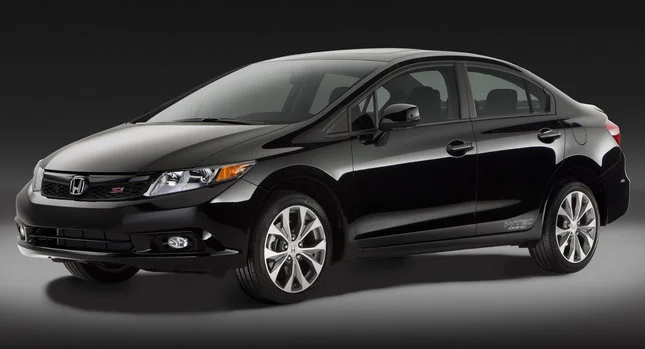
Based on its reliability versus affordability, the Honda Civic 9th generation might be the best Civic generation. For this generation, only 2012 should be avoided, while 2013 is the most reliable Civic year, followed by 2014 and 2015.
The Best Years: 2013, 2014, 2015
The Honda Civic years of 2013, 2014, and 2015 have significantly good ratings from Consumer Reports, VehicleHistory, and Cars.com.
Performance and fuel efficiency were balanced by these years’ 1.8L four-cylinder engines paired with 5-speed manuals or CVTs.
With the LX base trim, the EX-L top-tier trim, sporty Si, fuel-efficient HF, and the base-level LX, trim diversification continues.
This model received a more sophisticated exterior facelift than the 2012 Civic, which received criticism for bland aesthetics.
Besides improved materials and ergonomics, the interior also received a significant upgrade.
With HondaLink , a smartphone-integrated infotainment system introduced in 2014, drivers can use navigation, streaming audio, and voice control to find information.
With the 2014 Honda LaneWatch blind-spot display, safety was emphasized.
However, some users found the CVT transmission’s responsiveness a little sluggish, despite the accolades.
The Worst Years: 2012
Do you know why you should avoid the 2012 Honda Civic? The later models of the 2012 model addressed teething problems as they have in many introductory years. The following are some of the problems with the 2012 Honda Civic:
Its design was often regarded by critics as uninspired. Despite the 1.8L engine’s reliability, the overall ride quality and cabin noise isolation left much to be desired.
Power steering loss and sporadic transmission glitches were among the complaints raised by owners.
In rare instances, the left driveshaft could separate and cause a loss of drive power, causing a recall.
Aside from some decent ratings, such as those from J.D. Clearly, the company has a lot of room for improvement.
The NHTSA has recalled and received complaints about the 2012 Honda Civic.
Best, Neutral & Worst Years for Honda Civic 10th Generation (2016-2021)
Introducing the 10th generation Civic in 2016, Honda showcased a bold, innovative, and futuristic redesign.

In the current generation, 2019 is the best Civic year, while 2020, 2021, and 2022 are the worst.
The Best Years: 2019, 2020, 2021
The best years for the 10th generation Honda Civic were 2019, 2020, and 2021, according to Consumer Reports, VehicleHistory, and Cars.com.
Models were powered primarily by two engine options, a turbocharged 1.5L four-cylinder and a 2.0L four-cylinder that offered excellent fuel economy and performance.
There are two transmission options for these engines, a 6-speed manual or a CVT, depending on the trim.
From the entry-level LX, to the sporty Sport, the feature-rich EX, the fuel-efficient EX-L, and the top-of-the-line Touring, Honda offered a wide range of trims.
In these years, Honda introduced its Sensing Suite, including collision mitigation braking, lane-keeping assist, and adaptive cruise control.
In addition to improved voice recognition, Apple CarPlay, Android Auto, and a larger touchscreen, the infotainment system received a significant upgrade.
In a world where the tech industry is expected to reach $5 trillion in 2023, many businesses struggle with common technology issues. Consumers often face obstacles like software glitches, cybersecurity threats, and IT support challenges. TechLeez emerges as a forward-thinking solution provider, dedicated to addressing these needs with a wide array of services. This guide will highlight TechLeez’s offerings, benefits, and how it stands out in a crowded market.
The Neutral Years: 2017, 2018
Civics of 2017 and 2018 were transition years, working out kinks from the 2016 models and laying the foundation for future excellence.
Based on user feedback, the CVT’s responsiveness was refined slightly while engine options remained largely the same.
The Honda Sensing suite was gradually integrated across different trim levels as Honda invested in safety.
After a decade-long hiatus, the Civic Hatchback was introduced in these years, adding versatility and a European flare.
The Worst Years: 2016
This generation’s most problematic vehicle is the 2016 Honda Civic. The 2016 Honda Civic is a bad buy for these exact reasons.
It is common for owners to report issues such as sticky steering wheels and jerky steering, which make driving an unpleasant experience.
It became clear that all Civic models of the tenth generation had malfunctioning air conditioning systems and Freon leaks.
With the Civic condenser warranty extension, Honda took proactive measures to address the issue.
Additionally, the infotainment system often lagged or experienced glitches despite its advanced features.
NHTSA recalls and complaints for Honda Civics in 2016, 2017, and 2018.
Best & Worst Years for Honda Civic 11th Generation (2022-2023)
Honda Civic’s 11th generation entered a new era with a refined and mature design, moving away from aggressive, bold design cues of its previous generation.
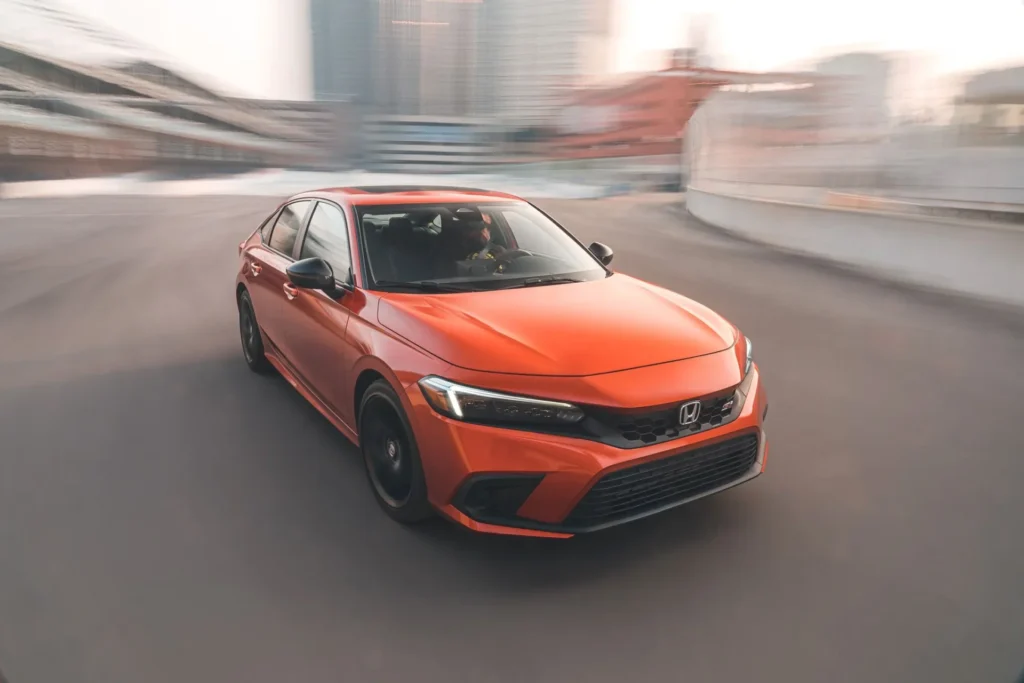
The Honda Civic’s best year is currently 2023, while its worst year is 2022, due to a high number of owner complaints.
The Best Years: 2023
Honda Civics have remained class leaders since 2023. With a cleaner exterior and more elegant stance, the model appeared more mature and elegant.
There was also a focus on tactile feedback and minimalist design cues in interiors.
There are four trim levels on the Civic: LX, Sport, EX, and Touring. Despite being called LX, Sport, EX-L, and Sport Touring, Civic Hatchback trim levels are mostly the same.
EX and Touring models have 1.5-liter, turbocharged four-cylinder engines, while LX and Sport have 2.0-liter four-cylinders.
With the exception of the liftback model, all sedans and liftbacks come standard with a CVT. Nevertheless, the Sport and Sport Touring models of the liftback are available with a 6-speed manual transmission.
In the city, the model achieved 23 mpg, while on the highway, it achieved 44 mpg.
The Worst Years: 2022
Honda Civics of the 11th generation have specific teething problems due to their introduction in 2022.
Most notable was the stickiness of the steering wheel that echoed the previous generation, raising concerns about drivability and overall comfort.
Moreover, some users reported intermittent activations of the Collision Mitigation System and the Adaptive Cruise Control when they did not need them.
The NHTSA has recalled and received complaints for the Honda Civic 2022.
Common Issues with the Honda Civic (By Year)
Buying a used Honda Civic can be difficult if it comes with a long list of issues. In order to help you avoid some of the most common issues throughout the year, we’ve listed some of the most common issues below.
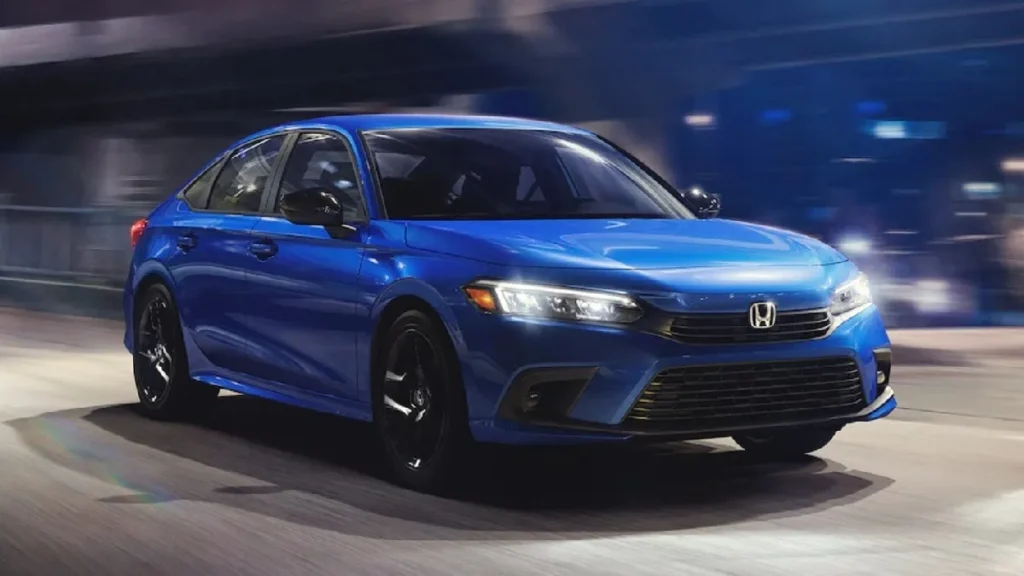
2001
One of the worst Honda Civics ever built went down in history in 2001. There were several recalls and transmission issues, all of which cost an average of $2300 each.
2004
As the brand seemed to be struggling with heating issues this year, it was the year of the fuses. It is not uncommon for HVAC systems to have to be completely replaced, with costs reaching $200 in the most extreme cases.
2005
Many Civic models were reported to have airbag problems in 2005. A warning light that would not go out was one of the most common problems. This led to an airbag recall, which affected this year’s model.
2006
Many 2006 Civics had cracked engine blocks that caused coolant leaks and engine failures. Drivers would have to pay the entire cost out of pocket even though the warranty covered the engine block.
Common Honda Civic Problems
The Honda Civic ranks 3rd out of 36 compact cars according to RepairPal’s reliability ranking of 4.5 out of 5.0. There are a few issues that should be addressed, however:
Best & Worst Honda CR-V Years | Years To Avoid
Best & Worst Honda Pilot Years | Years To Avoid
Best & Worst Honda Accord Years | Years To Avoid
Best & Worst Honda Odyssey Years | Years To Avoid
Honda Pilot Firing Order For Cylinder Numbers From 2002-2015
Best & Worst Honda Fit Years | Years To Avoid
FAQs
Are Honda Civics typically reliable?
Those looking for reliable transportation frequently choose the Honda Civic due to its reliability. Aside from the Civic, Honda is best known for its Accord and CR-V models. The Civic, however, isn’t perfect (even Honda isn’t perfect).
How much does a used Honda Civic typically cost?
Honda Civics have a strong reputation for reliability, making them a premium used car. Used car supplies are tight, making this situation worse. Depending on the model year and other factors, prices will vary significantly. According to CoPilot Price Pulse, the average selling price for a 2008 Honda Civic sedan is $8,187. The current market conditions have resulted in a 36% premium on a 2019 for $22,862.
Is the Honda Civic a good car to purchase?
I definitely agree. Honda Civics are excellent cars to buy. It is evident from the millions of Civics Honda has sold over the last five decades. Civic model years from 2002 through 2005 should be skipped.
Conclusion
We conclude our deep dive into the Honda Civic’s storied history by stating that the best Honda Civic years to buy are 2011, 2013-2015, and 2017-2023.
Is there any firsthand experience that aligns with our findings concerning which Honda Civic generation you prefer?
Let us know what you think and what you’ve experienced in the comments!
